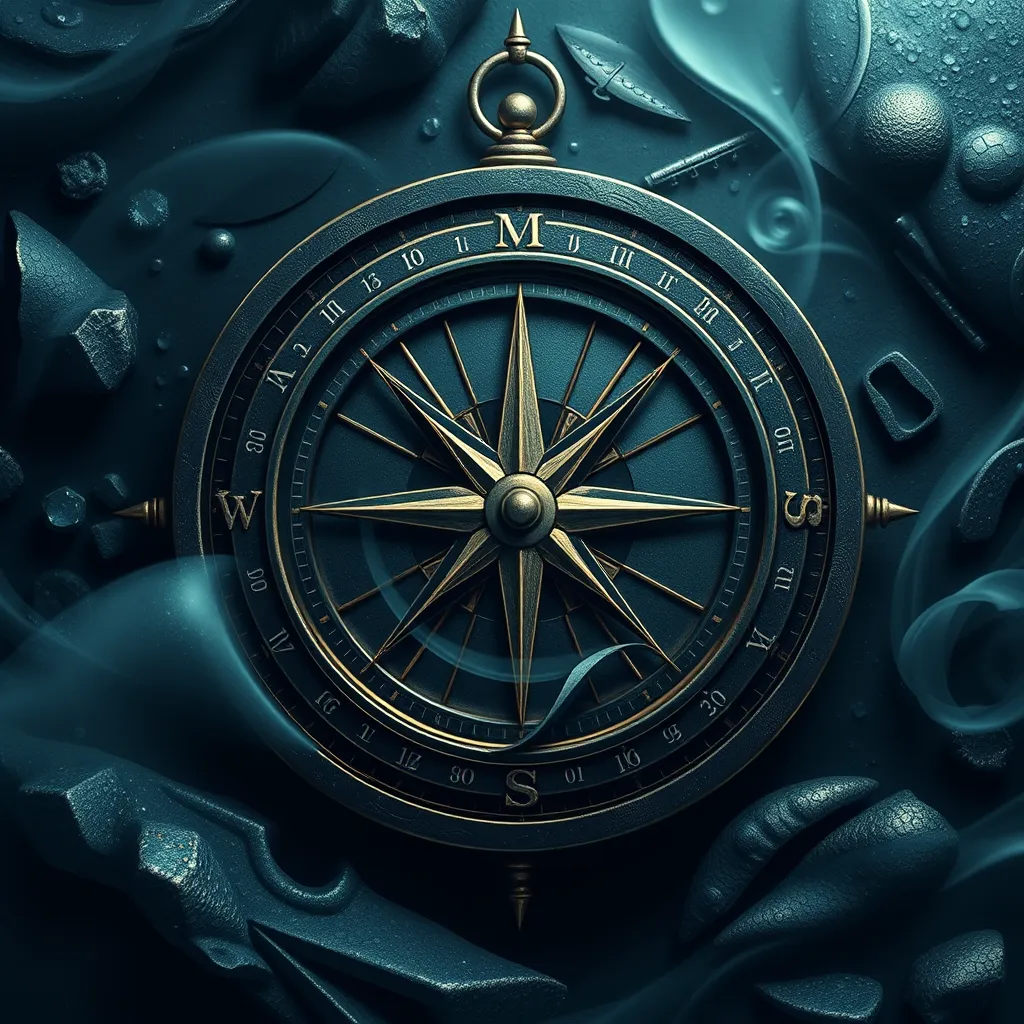The Mermaid’s Compass: Navigating the Myths and Legends of the Sea
I. Introduction
Mermaids, enchanting and ethereal beings of folklore, have captivated the imaginations of cultures around the world for centuries. These half-woman, half-fish entities symbolize the mysteries of the ocean and the duality of beauty and danger that the sea embodies. From ancient sailors’ tales to modern adaptations in literature and film, mermaid mythology holds a significant place in maritime culture. This article aims to explore various myths and legends of the sea, diving deep into the origins, cultural interpretations, and the enduring allure of mermaids.
II. The Origins of Mermaid Myths
The origins of mermaid myths can be traced back to ancient civilizations. Early historical accounts reveal that tales of mermaids or similar beings existed in many cultures:
- Ancient Assyria: The goddess Atargatis, often depicted as a fish-woman, is one of the earliest representations of a mermaid-like figure.
- Greek Mythology: The Greeks spoke of sirens, dangerous creatures that lured sailors to their doom with their enchanting songs.
- Middle Ages: Mermaids became popular in European folklore, often portrayed as both seductresses and harbingers of misfortune.
As time progressed, these stories evolved, reflecting the changing beliefs and cultural contexts of different societies. The mermaid myth continues to adapt, embracing new themes and interpretations across generations.
III. Iconic Mermaid Legends Across Cultures
Mermaids are not just a singular concept; they manifest differently across various cultures. Here are some iconic mermaid legends:
A. The Sirens of Greek mythology
In Greek mythology, sirens were beautiful creatures who lured sailors with their hypnotic songs. These beings were often depicted as bird-like women, but later interpretations in art and literature portrayed them as mermaids. The sirens symbolize the dangerous allure of the sea, representing both temptation and peril.
B. The Slavic Rusalka and its interpretations
The rusalka, a water nymph in Slavic folklore, is often depicted as a beautiful young woman who drowned and became a spirit of the water. Rusalki are known to seduce men and can be both benevolent and malevolent. Their tales reflect the complexities of femininity and the mysteries of water.
C. The African Mami Wata and her influence on folklore
Mami Wata, a revered water spirit in African folklore, embodies beauty and power. Often depicted as a mermaid, she is associated with fertility, wealth, and healing. Mami Wata legends highlight the connection between femininity and the natural world, emphasizing the importance of water in African cultures.
IV. Mermaids in Literature and Art
Mermaids have made a significant impact on literature and the arts, inspiring countless works that explore their mythical nature.
- Hans Christian Andersen’s “The Little Mermaid”: This classic tale tells the story of a young mermaid who sacrifices everything for love, highlighting themes of longing and sacrifice.
- Contemporary Literature: Modern authors have reimagined mermaid stories, often giving them a voice and agency, challenging traditional narratives.
- Visual Arts: From Botticelli’s paintings to Disney’s animated films, mermaids have been portrayed as both enchanting and fearsome, symbolizing the beauty and danger of the sea.
V. Symbolism and Themes in Mermaid Myths
Mermaids embody a rich tapestry of symbolism and themes, often exploring the dual nature of their existence:
- Beauty and Danger: Mermaids are often depicted as alluring figures that can lead sailors to their doom, representing the seductive yet perilous nature of the sea.
- Femininity and Sexuality: Many mermaid legends delve into themes of femininity, sexuality, and the societal perceptions of women, reflecting both empowerment and objectification.
- The Sea as a Metaphor: The ocean itself serves as a metaphor for the unknown, reflecting humanity’s fears and desires.
VI. Modern Interpretations and Cultural Impact
In contemporary culture, mermaids have experienced a resurgence, becoming symbols of empowerment and individuality.
- Films and Television: Movies like “The Little Mermaid” and series such as “Siren” have redefined mermaid stories, portraying them as complex characters with agency.
- Music and Fashion: Mermaids have inspired countless songs and fashion trends, often associated with themes of freedom and self-expression.
- Mermaid Festivals: The rise of mermaid festivals globally celebrates the fascination with mermaids, blending folklore with modern creativity.
VII. The Scientific Perspective: Realities of the Sea
While mermaids are mythical, there are scientific explanations that may have inspired these tales:
- Marine Biology: Encounters with manatees or dugongs, large marine mammals, may have been misinterpreted by sailors as mermaids, especially after long voyages at sea.
- Underwater Phenomena: Bioluminescent organisms and unusual oceanic phenomena could lead to sightings that inspired mermaid stories, blurring the lines between reality and myth.
VIII. Conclusion
The enduring allure of mermaids in mythology and culture highlights humanity’s fascination with the sea and the mysteries it holds. These mythical beings serve as a reminder of our connection to nature, embodying the beauty and danger that lies beneath the waves. Through storytelling, we explore our relationship with the ocean, reflecting our fears, desires, and the complexities of femininity. As we continue to navigate the myths and legends of the sea, the mermaid remains a powerful symbol of the unknown, inspiring generations to dream and wonder.



